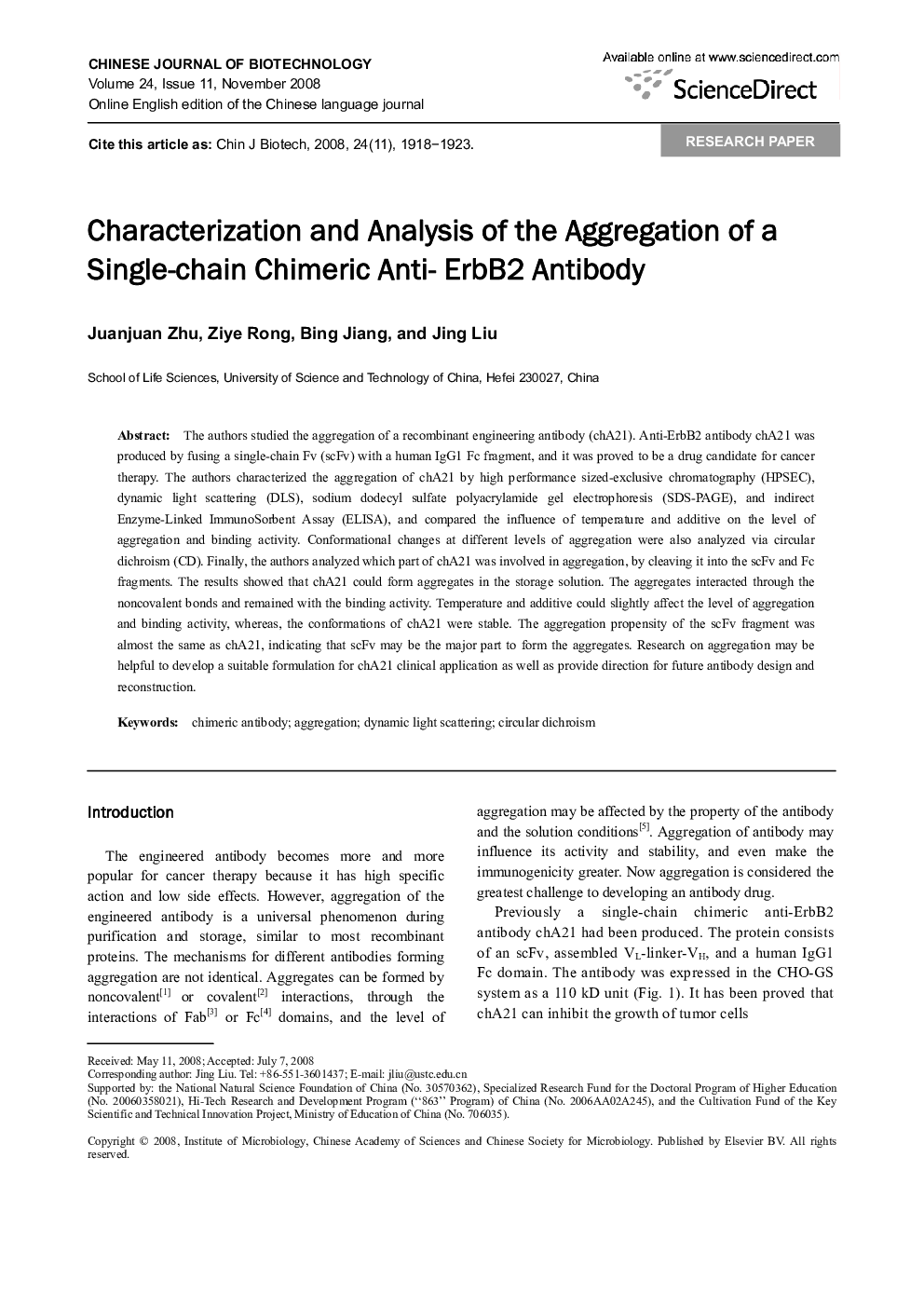| Article ID | Journal | Published Year | Pages | File Type |
|---|---|---|---|---|
| 2078900 | Chinese Journal of Biotechnology | 2008 | 6 Pages |
Abstract
The authors studied the aggregation of a recombinant engineering antibody (chA21). Anti-ErbB2 antibody chA21 was produced by fusing a single-chain Fv (scFv) with a human IgG1 Fc fragment, and it was proved to be a drug candidate for cancer therapy. The authors characterized the aggregation of chA21 by high performance sized-exclusive chromatography (HPSEC), dynamic light scattering (DLS), sodium dodecyl sulfate polyacrylamide gel electrophoresis (SDS-PAGE), and indirect Enzyme-Linked ImmunoSorbent Assay (ELISA), and compared the influence of temperature and additive on the level of aggregation and binding activity. Conformational changes at different levels of aggregation were also analyzed via circular dichroism (CD). Finally, the authors analyzed which part of chA21 was involved in aggregation, by cleaving it into the scFv and Fc fragments. The results showed that chA21 could form aggregates in the storage solution. The aggregates interacted through the noncovalent bonds and remained with the binding activity. Temperature and additive could slightly affect the level of aggregation and binding activity, whereas, the conformations of chA21 were stable. The aggregation propensity of the scFv fragment was almost the same as chA21, indicating that scFv may be the major part to form the aggregates. Research on aggregation may be helpful to develop a suitable formulation for chA21 clinical application as well as provide direction for future antibody design and reconstruction.
Related Topics
Life Sciences
Biochemistry, Genetics and Molecular Biology
Biotechnology
Authors
Juanjuan Zhu, Ziye Rong, Bing Jiang, Jing Liu,
